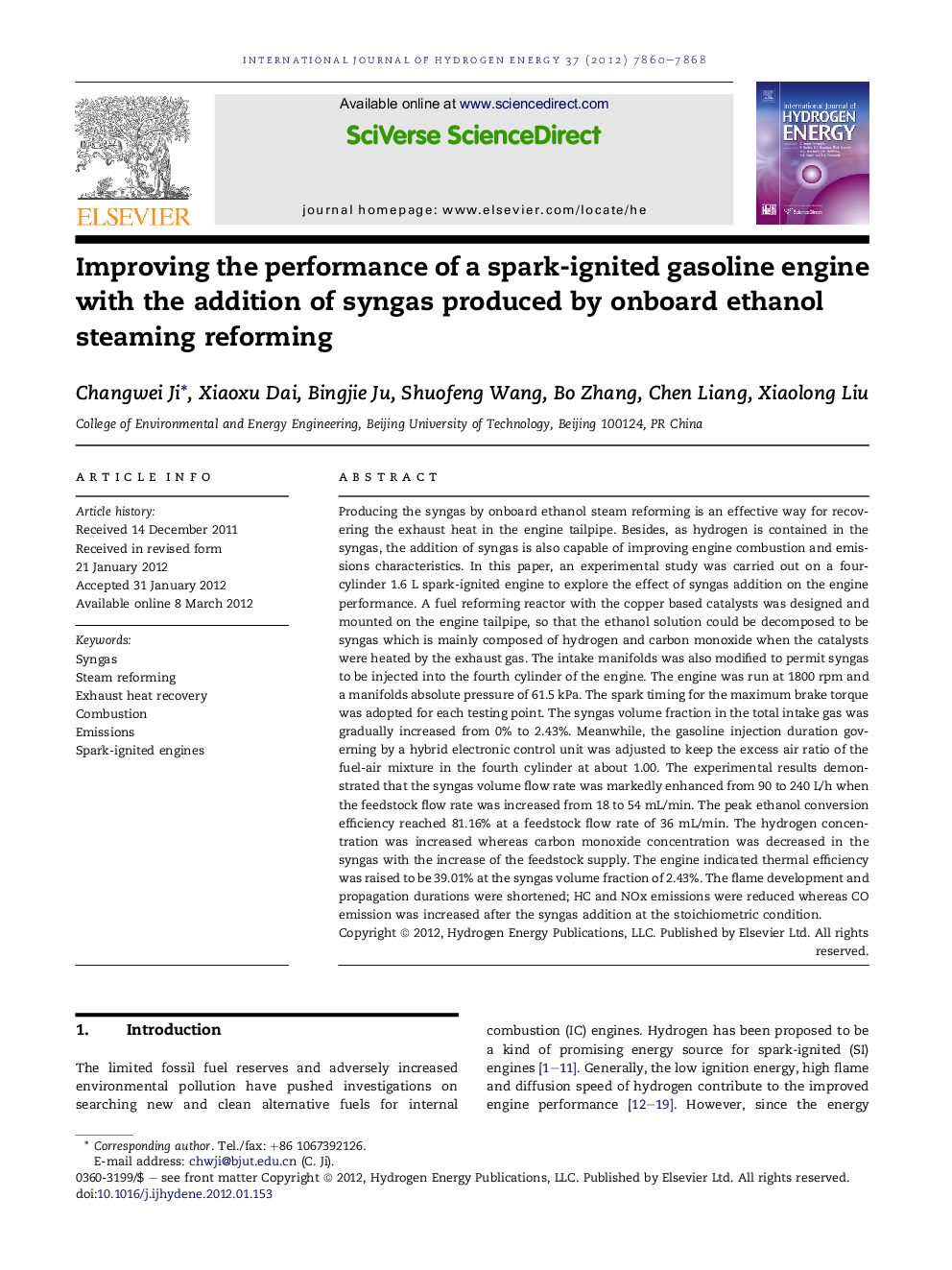| کد مقاله | کد نشریه | سال انتشار | مقاله انگلیسی | نسخه تمام متن |
|---|---|---|---|---|
| 1278589 | 1497560 | 2012 | 9 صفحه PDF | دانلود رایگان |

Producing the syngas by onboard ethanol steam reforming is an effective way for recovering the exhaust heat in the engine tailpipe. Besides, as hydrogen is contained in the syngas, the addition of syngas is also capable of improving engine combustion and emissions characteristics. In this paper, an experimental study was carried out on a four-cylinder 1.6 L spark-ignited engine to explore the effect of syngas addition on the engine performance. A fuel reforming reactor with the copper based catalysts was designed and mounted on the engine tailpipe, so that the ethanol solution could be decomposed to be syngas which is mainly composed of hydrogen and carbon monoxide when the catalysts were heated by the exhaust gas. The intake manifolds was also modified to permit syngas to be injected into the fourth cylinder of the engine. The engine was run at 1800 rpm and a manifolds absolute pressure of 61.5 kPa. The spark timing for the maximum brake torque was adopted for each testing point. The syngas volume fraction in the total intake gas was gradually increased from 0% to 2.43%. Meanwhile, the gasoline injection duration governing by a hybrid electronic control unit was adjusted to keep the excess air ratio of the fuel-air mixture in the fourth cylinder at about 1.00. The experimental results demonstrated that the syngas volume flow rate was markedly enhanced from 90 to 240 L/h when the feedstock flow rate was increased from 18 to 54 mL/min. The peak ethanol conversion efficiency reached 81.16% at a feedstock flow rate of 36 mL/min. The hydrogen concentration was increased whereas carbon monoxide concentration was decreased in the syngas with the increase of the feedstock supply. The engine indicated thermal efficiency was raised to be 39.01% at the syngas volume fraction of 2.43%. The flame development and propagation durations were shortened; HC and NOx emissions were reduced whereas CO emission was increased after the syngas addition at the stoichiometric condition.
▶ We studied the performance of a syngas-blended gasoline engine. ▶ Thermal efficiency was improved after syngas addition. ▶ CA0-10 and CA10-90 were shortened with the increase of syngas blending level. ▶ HC and NOx emissions were reduced after syngas addition.
Journal: International Journal of Hydrogen Energy - Volume 37, Issue 9, May 2012, Pages 7860–7868